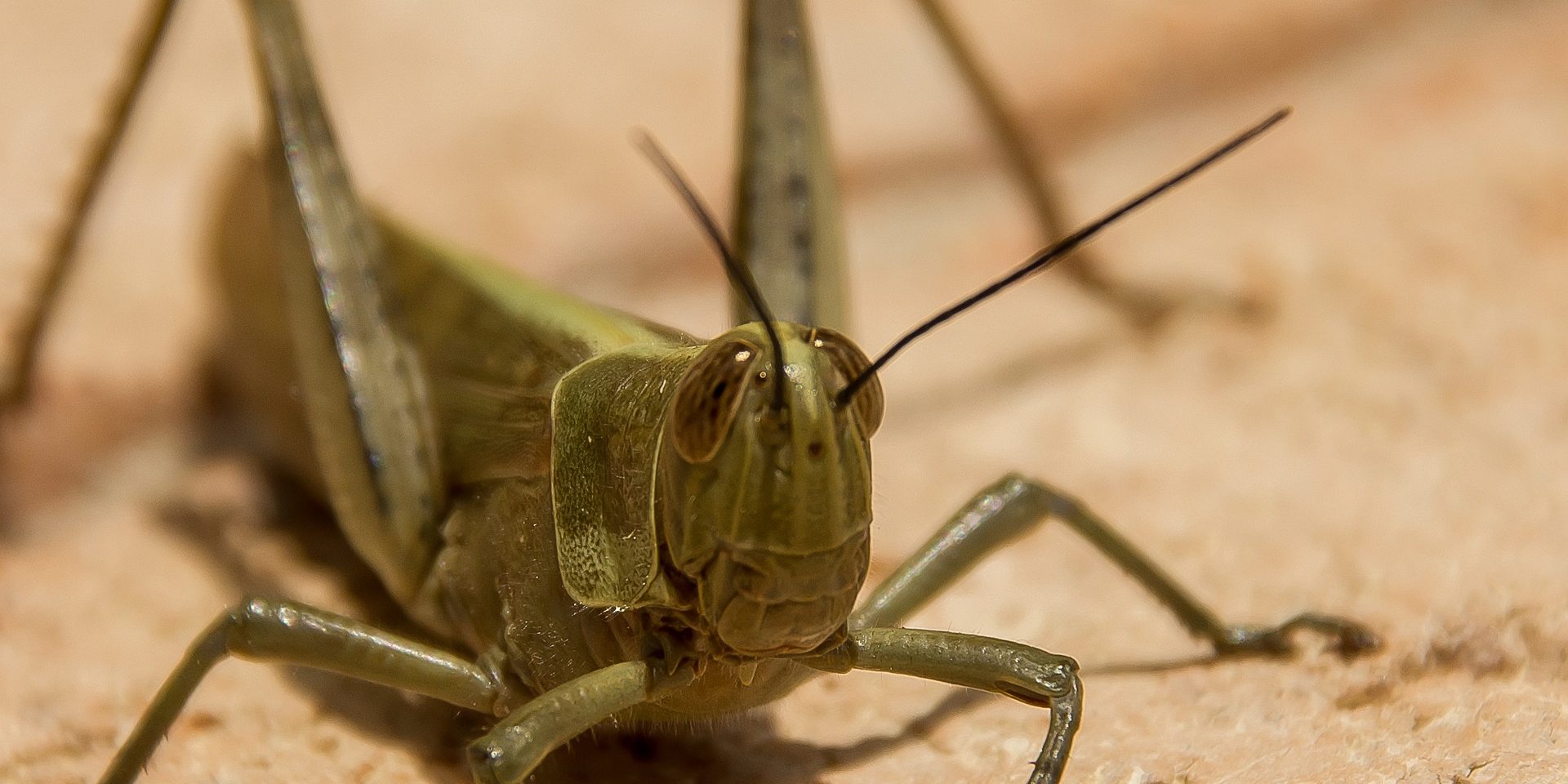In an organic garden, we want to welcome wildlife as much as possible. But there are times when the populations of certain pest species can get out of control. Imbalances in broader ecosystems can allow for infestations – and grasshopper infestation is one problem you may encounter.
The first thing to recognise is that the goal should not be to eradicate grasshoppers entirely. Like any other garden creature, they can be an important part of the ecosystem as a whole. But when there are high numbers of grasshoppers, they can devastate your crops and eat their way through your carefully tended plants.
Maintain Biodiversity to Control Grasshopper Infestation
If there are high numbers of grasshoppers in your area, boosting and maintaining biodiversity should be a top priority. In the case of grasshoppers, one key goal should be to increase the numbers of predators – birds or other insects, for example, which will eat plenty of these pests and kept to keep their numbers down.
Many bird species are excellent predators for grasshoppers. You can attract plenty of wild birds to your garden with the plant choices you make, and by creating habitats suitable for the species you wish to attract. Making sure there is a water source in your garden such as a garden pond, for example, can also help to ensure there are lots of birds about.
A garden pond or other water source will also help encourage predators such as frogs and dragonflies, to eat the grasshoppers in your garden.
In addition to attracting and aiding wildlife, domestic birds can also be useful in keeping grasshopper numbers down. Chooks and guinea fowl, for example, are useful predators for these pests. Allowing chickens or guinea fowl to ‘patrol’ the area around a fenced off kitchen garden area can help keep crucial food crops safe.
A range of other creatures also eat grasshoppers, and you should be sure to make them welcome in your garden too to keep the pest numbers down. For example, attract lizards with sunning rocks, and spiders, carabid and rove beetles with rocks and rotting wood piles. Robber flies, paper wasps, tachnid flies and parasitic wasps are also important predatory creatures to attract to your garden. Make sure you have plenty of flowering plants to provide nectar for these beneficial insects through as much of the year as possible.
Choose More Grasshopper-Resistant Plants
If there is a severe grasshopper infestation in your area, choosing the right plants is not just about maintaining and improving biodiversity. It can also be about choosing plants that are less likely to be threatened by this pest.
Crops such as squash, peas and tomatoes, for example, are ones that grasshoppers will usually avoid. Other plants, like sage, verbena, salvia, dianthus, lilac, and forsythia are also said to be distasteful to grasshoppers. So planting these may help in preventing a major infestation from taking hold.
Erect Physical Barriers Against Grasshoppers
While ensuring good biodiversity and attracting predators can make a big difference, often, you will still have to consider erecting physical barriers to protect certain plants from grasshoppers. Floating row covers/ mosquito netting can help keep off grasshoppers early in the season.
Trap Grasshoppers
In cases where there is a severe infestation, gardeners may consider trapping grasshoppers in their gardens to reduce the plague. Grasshoppers are attracted to the colour yellow, so this can help in attracting them to a water trap. You can also simply catch grasshoppers manually, with a net or by hand. Head out early in the morning to stand the best chance of catching them if this is the strategy you wish to take.
Use a Biological Control or Organic Spray
Rather than resorting to chemical solutions, organic gardeners will, in extremis, usually instead turn to biological controls. For severe grasshopper infestations, biological control with microbes such as Nosema locustae, Beauveria spp., Lecanicillium spp. and Metarhizium spp. can be considered.
However, in certain situations, organic sprays may be considered as a last resort. Canola oil is a beneficial grasshopper attractant. It can be used to make traps more attractive to these pests. And it can also be combined with organic insecticides to make them more targeted and effective. Consider making an insecticide with chilli, garlic, or natural soaps, for example. Just remember that insecticides may often pose a risk to insects you want to attract to your garden, as well as to those you do not want. So use these with caution if you use them at all.

